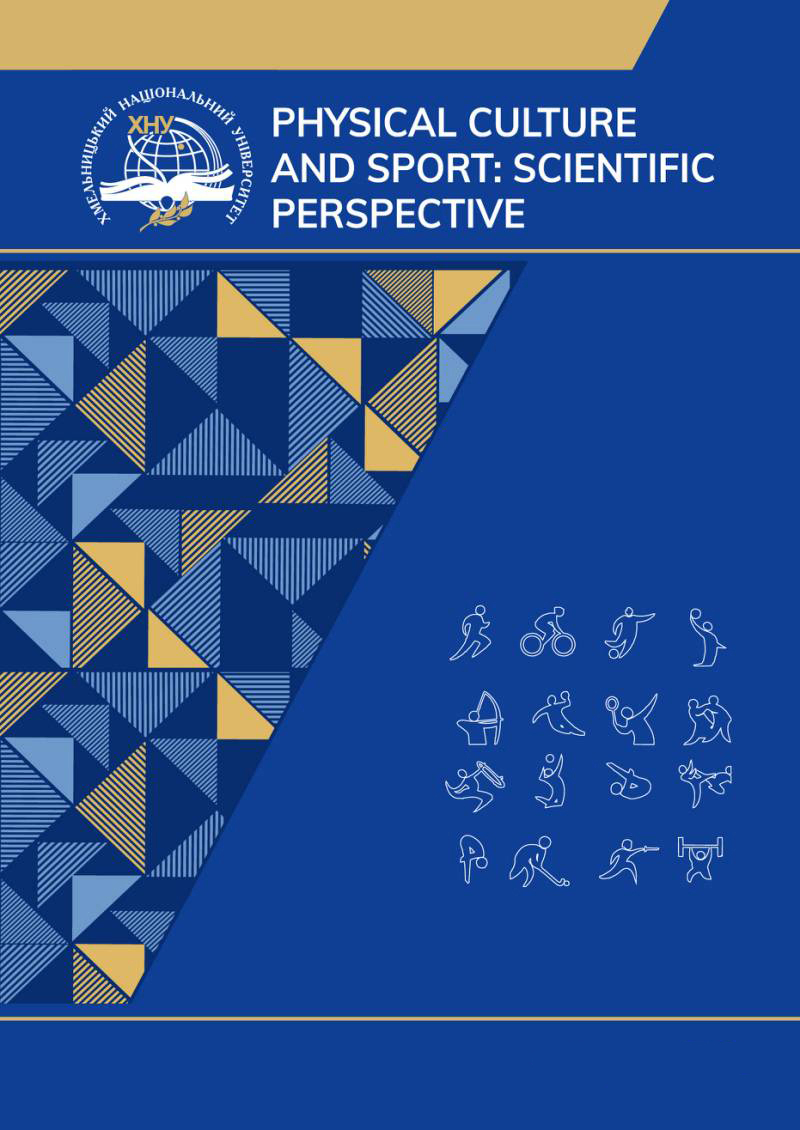REHABILITATION OF COMBATANTS WITH CONSTANT PHYSIOLOGICAL STRESS
DOI:
https://doi.org/10.31891/pcs.2024.2.9Keywords:
psychological and physiological rehabilitation, constant physiological stress, psychosemantics of Types of Military Stress, combat mental trauma, correction of self-awarenessAbstract
The purpose of this article is to introduce Psychosemantics of Types of Military Stress of Combatants: we mean Constant physiological stress of combatants with Post-traumatic stress disorder; to show the stages and the mechanisms of rehabilitation of combatants with constant physiological stress. Methods of the research. The following theoretical methods of the research were used to solve the tasks formulated in the article: a categorical method, structural and functional methods, the methods of the analysis, systematization, modeling, generalization. The experimental method was the method of organizing empirical research. The results of the research. We proved, that psychological and physiological rehabilitation of combatants served such basic tasks, as: detection and diagnosis of mental disorders in military personnel; evacuation of combatants who have been psychologically traumatized from the battlefield; restoration of impaired (lost) mental functions; correction of self-awareness, self-esteem and well-being of combatants who received mental disorders and physical mutilations. Conclusions. We showed, that the following methods were widely used by psychologists and rehabilitation specialists of military units and unit commanders in the practice of psychological rehabilitation of combatants who had received combat mental trauma: autogenic techniques (performance of mental self-regulation techniques, self-training, meditation, etc.); physiological methods (deep sleep, rest, quality food, drinking a lot of water, shower, field bath); organizational means (establishing a clear regime of work and rest, involvement of servicemen into active combat training, service, preservation of military uniform); medication means (sedatives, tranquilizers, antidepressants, nootropics, psychostimulants, phytotherapy, vitamin therapy, etc.); psychotherapeutic techniques and methods (individual and group rational psychotherapy, music, library, art, nature therapy, etc.).
References
Brodsky, B.S., Oquendo, M., Ellis, S.P., Haas, G.L., Malone, K.M. & Mann, J.J. (2001). The relationship of childhood abuse to impulsivity and suicidal behavior in adults with major depression. The American Journal of Psychiatry, 158(11), 1871–1877. Retrieved from http://dx.doi.org/10.1176/appi.ajp.158.11.1871.
Chan, J.W.M., Ng, C.K. & Chan, Y.H. (2003). Short term outcome and risk factors for adverse clinical outcomes in adults with severe acute respiratory syndrome (SARS). Thorax, 58, 686–89. Retrieved from https://pubmed.ncbi.nlm.nih.gov/12885985.
Chenguang, S., Zhaoqin, W., Fang, Z., Yang, Y., Jinxiu, Li, Jing, Y., Fuxiang, W., Delin, Li, Minghui, Y., Li, X., Jinli, W., Haixia, X., Yan, Y., Jiuxin, Qu., Ling, Q., Li, Ch., Zhixiang, Xu, Ling, P., Yanjie, Li, Haixia, Zh., Feng, Ch., Kun, H., Yujing, J., Dongjing, Liu, Zheng, Zh., Yingxia, Liu & Lei, Liu (2020). Treatment of 5 Critically Ill Patients With COVID-19 With Convalescent Plasma. JAMA-Journal of the American Medical Association, 323 (16), 1582–1589. Retrieved from http://dx.doi.org/10.1001/jama.2020.4783.
Chen, N., Zhou, M. & Dong, X. (2020). Epidemiological and clinical characteristics of 99 cases of 2019 novel coronavirus pneumonia in Wuhan, China: a descriptive study. The Lancet, 395, 507–13. Retrieved from http://dx.doi.org/10/1016/S0140-6736(20)30211-7.
Choi, K.W., Chau, T.N., Tsang, O., Tso, E., Chiu, M.C., Tong, W.L., Lee Po, O., Ng Tak, K., Wai Fu, Ng, Lee Kam, Ch., Lam, W., Yu Wai, Ch., Lai Jak, Y. & Sik, T. (2003). Outcomes and prognostic factors in 267 patients with severe acute respiratory syndrome in Hong Kong. Ann Intern Med., 139, 715–23. Retrieved from http://dx.doi.org/10.7326/0003-4819-139-9-200311040-00005.
Corbitt, E.M., Malone, K.M., Haas, G.L. & Mann, J.J. (1996). Suicidal behavior in patients with major depression and comorbid personality disorders. Journal of affective disorders, 39(1), 61–72. Retrieved from http://dx.doi.org/10.1016/0165-0327(96)00023-7.
Edwards, F., Lee, H. & Esposito, M. (2019). Risk of being killed by police use of force in the United States by age, race-ethnicity, and sex. Proceedings of the National Academy of Sciences of the United States of America, 116 (34), 16793–16798. Retrieved from http://dx.doi.org/10.1073/pnas.1821204116.
Epstein, R., Blake, J.J. & González, T. (2017). Girlhood interrupted: the erasure of black girls’ childhood. Washington, DC: Georgetown Law Center on Poverty and Inequality. Retrieved from https://www.law.georgetown.edu/poverty-inequality-center/wp-content/uploads/sites/14/2017/08/girlhood-interrupted.pdf.tab.
Grunebaum, M.F., Oquendo, M.A., Burke, A.K., Ellis, S.P., Echavarria, G., Brodsky, B.S., Malone, K.M. & Mann, J.J. (2003). Clinical impact of a 2-week psychotropic medication washout in unipolar depressed inpatients. Journal of affective disorders, 75(3), 291–296. Retrieved from http://dx.doi.org/10.1016/s0165-0327(02)00168-4.
Huang, Yung-yu, Oquendo, M.A., Friedman, Jill M.H., Greenhill, L.L., Brodsky, B., Malone, K.M., Khait, V. & Mann, J.J. (2003). Substance abuse disorder and major depression are associated with the human 5-HT1B receptor gene (HTR1B) G861C polymorphism. International Journal of Neuropsychopharmacology, 28(1), 163–169. Retrieved from http://dx.doi.org/10.1038/sj.npp.1300000.
Kharchenko, Ye. & Onufriieva, L. (2023). Psychological Rehabilitation of Combatants with Mental Disorders and Mental Trauma. Zbirnyk naukovykh prats «Problemy suchasnoi psykholohii» – Collection of scientific issues “Problems of modern Psychology”, 61, 51–73. Retrieved from https://doi.org/10.32626/2227-6246.2023-61.51-73
Kraus, K. (2015). Bildung von Lehrerinnen und Lehrern: Herausforderungen in Schule, Hochschule und Gesellschaft. Berlin; Toronto: Budrich UniPress. 145 s. Retrieved from https://www.pedocs.de/frontdoor.php?source_opus=16736
Mandell, B. & Pherwani, S. (2003). Relationship between emotional intelligence and transformational leadership style: a gender comparison. Journal of Business and Psychology, 17(3), 387–404. Retrieved from https://www.scirp.org/reference/referencespapers?referenceid=1733264
Mykhalchuk, N., Kharchenko, Ye., Ivashkevych, Ed. & Ivashkevych, Er. (2024). 26-shkalnyi bipoliarnyi variant semantychnoho dyferentsialu dlia vyvchennia osoblyvostei boiovoho stresu viiskovosluzhbovtsiv – 26-scale bipolar version of the semantic differential for studying the characteristics of combatant stress of military personnel. Rivne: RSUofH. 88 p.
Mykhalchuk, N., Pelekh, Yu., Kharchenko, Ye., Ivashkevych, Ed., Zukow, W., Ivashkevych, Er. & Yatsjuryk, A. (2023). Suicidal behavior as a result of maladjustment of servicemen to theconditions of military service in Ukraine. European Journal of Clinical and Experimental Medicine, 21(1), 90–107. Retrieved from http://dx.doi.org/10.15584/ejcem.2023.1.12
Murphy, N.A., Hall, J.A. & Hall, C.R. (2003). Accurate intelligence assessments in social interaction: Mediators and gender effects. Journal of Personality, 71(3), June, 465–493. Retrieved from https://www.researchgate.net/publication/10747935_Accurate_Intelligence_Assessments_in_Social_Interactions_Mediators_and_Gender_Effects
Onufriieva, L., Chaikovska, O., Kobets, O., Pavelkiv, R. & Melnychuk, T. (2020). Social Intelligence as a Factor of Volunteer Activities by Future Medical Workers. Journal of History Culture and Art Research, 9(1), 84–95. Retrieved from http://dx.doi.org/10.7596/taksad.v9i1.2536.
Peseschkian, N. (2003). Mit Diabeteskomm'ich klar: Zurück zum inneren Gleichgewicht mit Positiver Psychotherapie. Germany; Stuttgart: TRIAS Verlag im Georg Thieme Verlag. 132 s. Retrieved from https://www.amazon.de/Diabetes-komm-klar-Psychotherapie-Erfolgs-Methode/dp/3893736530





